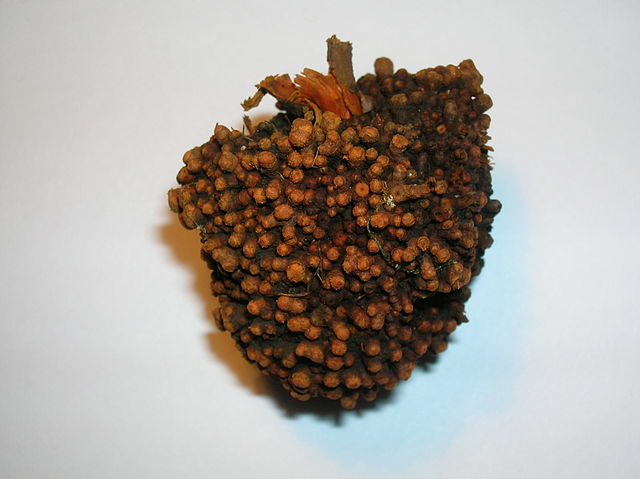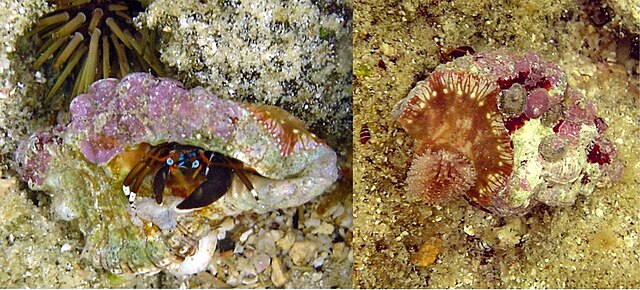A lichen is a symbiosis of algae or cyanobacteria living among filaments of multiple fungi species, along with a yeast embedded in the cortex or "skin", in a mutualistic relationship. Lichens are important actors in nutrient cycling and act as producers which many higher trophic feeders feed on, such as reindeer, gastropods, nematodes, mites, and springtails. Lichens have properties different from those of their component organisms. They come in many colors, sizes, and forms and are sometimes plant-like, but are not plants. They may have tiny, leafless branches (fruticose); flat leaf-like structures (foliose); grow crust-like, adhering tightly to a surface (substrate) like a thick coat of paint (crustose); have a powder-like appearance (leprose); or other growth forms.
A tree covered with leafy foliose lichens and shrubby fruticose lichens
Letharia vulpina, wolf lichen, grows like a multiple-branched tuft or leafless mini-shrub, so it has a fruticose growth form.
Flavoparmelia caperata has leaf-like structures, so it is foliose.
Caloplaca marina grows like an orange crust coating the rock, so it is crustose.
Symbiosis is any type of a close and long-term biological interaction between two biological organisms of different species, termed symbionts, be it mutualistic, commensalistic, or parasitic. In 1879, Heinrich Anton de Bary defined it as "the living together of unlike organisms". The term is sometimes used in the more restricted sense of a mutually beneficial interaction in which both symbionts contribute to each other's support.
In a cleaning symbiosis, the clownfish feeds on small invertebrates, that otherwise have potential to harm the sea anemone, and the fecal matter from the clownfish provides nutrients to the sea anemone. The clownfish is protected from predators by the anemone's stinging cells, to which the clownfish is immune. The relationship is therefore classified as mutualistic.
Alder tree root nodule houses endosymbiotic nitrogen-fixing bacteria.
Hermit crab, Calcinus laevimanus, with sea anemone
Bryoliths document a mutualistic symbiosis between a hermit crab and encrusting bryozoans.








